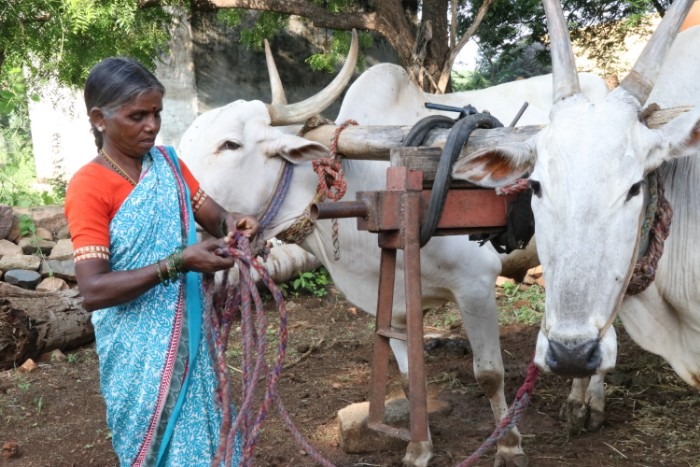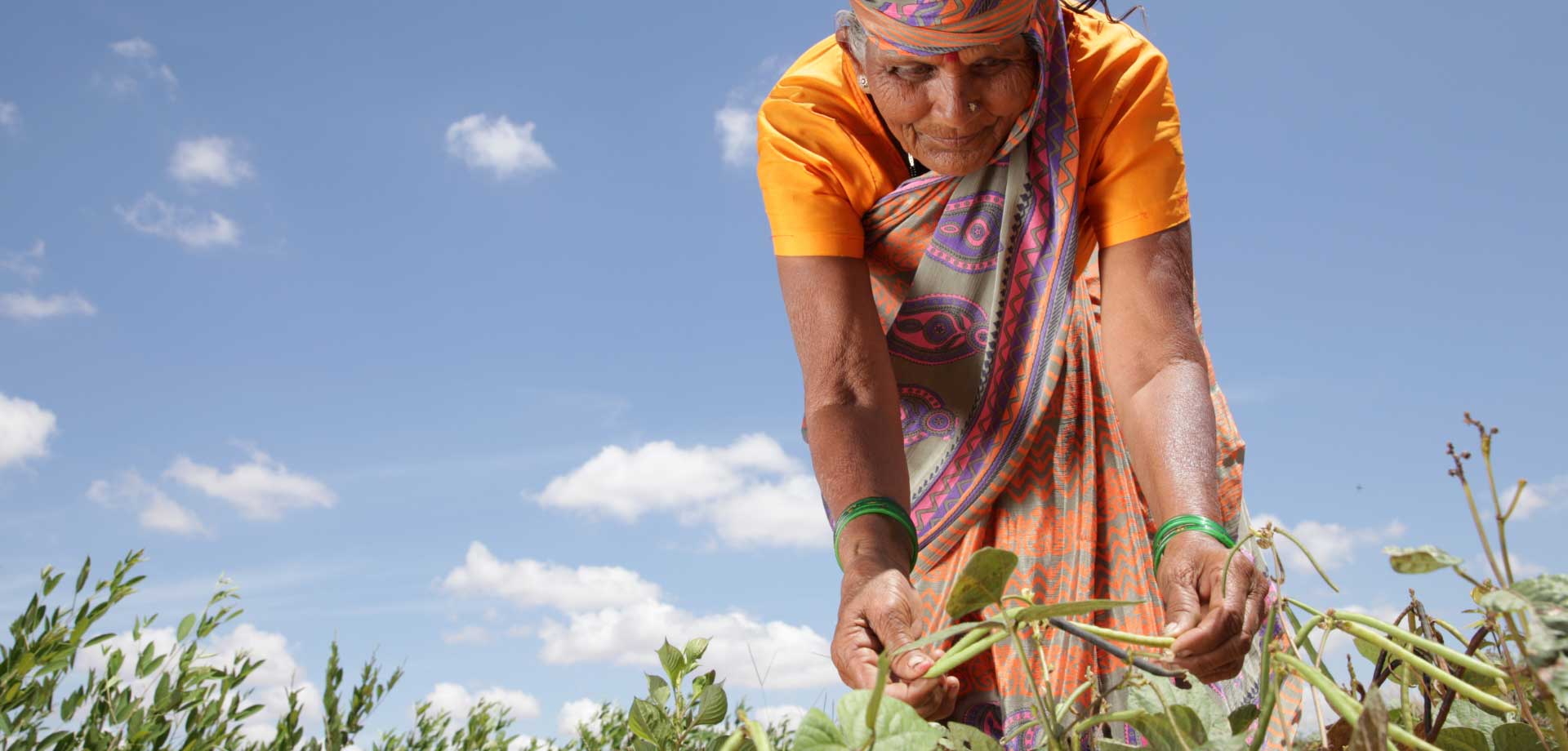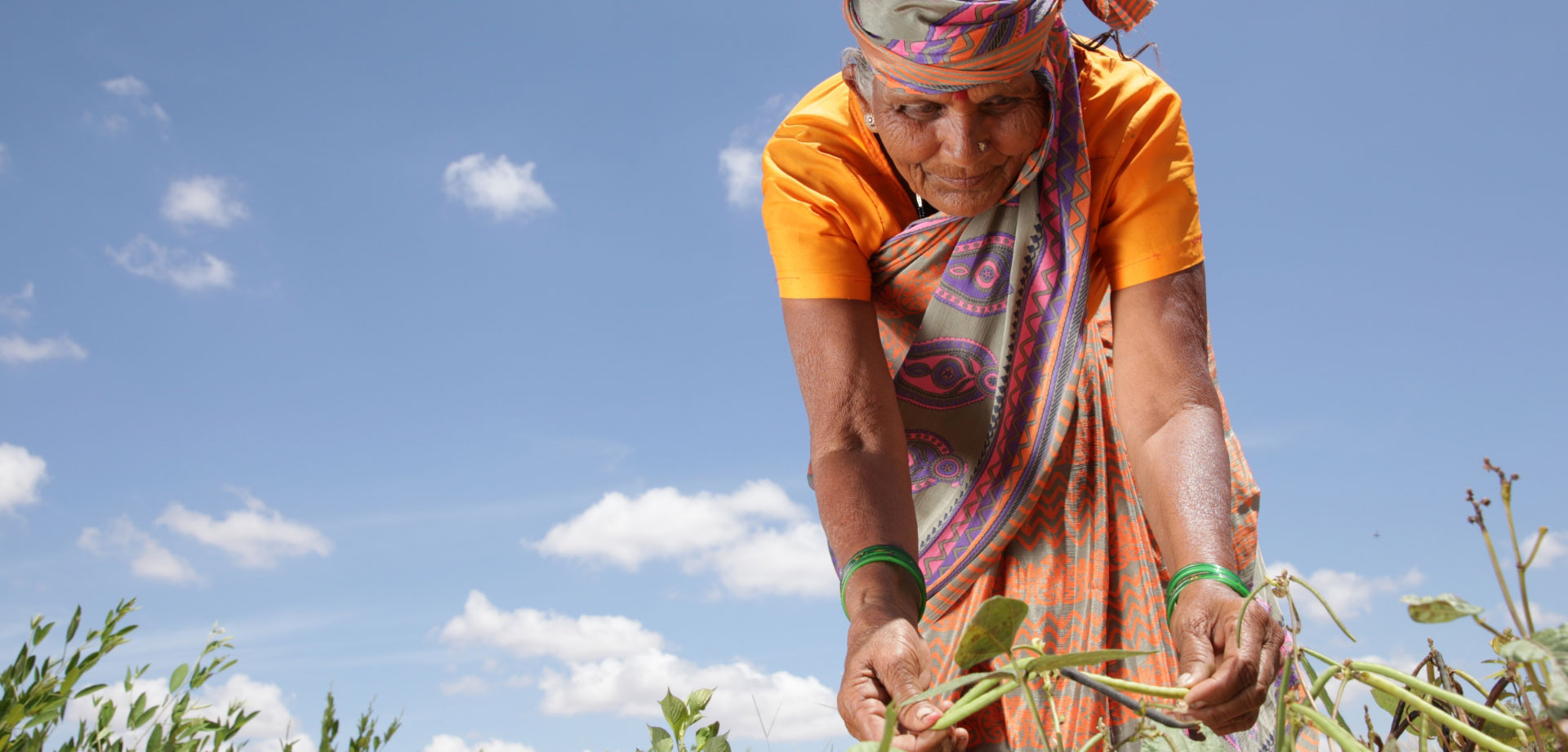Building Climate Resilient Communities by Promoting Sustainable Livelihoods for Small Farmers
Drought is a calamity that Andhra Pradesh in southern India has been suffering for many years. Rocky, uneven terrain, the non-absorbing thin top layer of soil, and a lack of vegetation further aggravate the situation for land used by small farmers. More than 36% of the working population in Andhra Pradesh, India, make a living from agriculture and are therefore dependent on low-yield soils and erratic rainfall. The income is often not sufficient to make a living and they remain in poverty.
In order to reduce the effects of drought, sustainable, long-term development focused on water harvesting, conservation, and management, use of renewable energy sources, and diversifying livelihood opportunities are being promoted. Farmers are recommended to diversify their cultivation and have alternative sources of income from cattle breeding.
Sustainable Agriculture Against
Poverty in Rural India





The Success Story of Salamma

At the age of eight, Salamma started working in the fields of landowners to support her family. Today she owns two hectares of land and is the only woman in her village who drives her own ox cart.
“Being an owner gives me pride and confidence, ” says Salamma while driving her ox cart early in the morning. She is in her sixties and lives with her husband in Mamipalli, a small village in Anantapur region, India. A mother of 2 daughters and 2 sons, she has not only dedicated her life to her family but also to toil hard on lands. She is the proud owner of 5 acres and 2 buffaloes.
The Programs We Support
Tamarind Plantations to Combat Poverty in India
- Andhra Pradesh is a chronic drought-prone area.
- Tamarind trees can withstand drought periods and grow amidst adverse climatic conditions to give good yields to farmers.
- The tamarind is a multipurpose tropical fruit that constitutes an indispensable ingredient in the south Indian diet.
- The aim of the program is to make a contribution to climate protection and to improve the livelihood of farmers.
- This project provides tamarind trees to farmers willing to grow them in their dry lands.
- The trees live up to 200 years and are therefore an investment for generations.
$375 enables a tamarind plantation that
secures a family’s income
DONATE NOW Any amount will help!
The Impact of the Program
1,486
farmers supported with micro-irrigation systems in 2020
578
solar panels functioning to pump water for drip-irrigation in 2020
416,879
fruit tree seedlings were distributed in 2020 to promote horticulture
891
head of cattle were distributed to women in 2020 so they can make a living by selling the milk
83,317
trees were planted for afforestation in 2020








